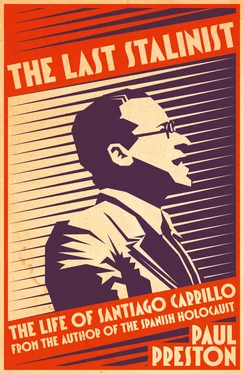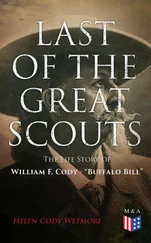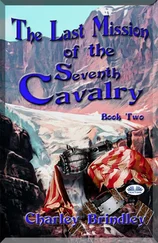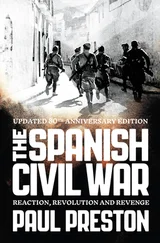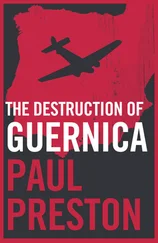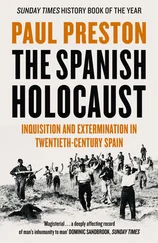Accordingly, this account of a fascinating life differs significantly from the many versions produced by the man himself which are contrasted here with copious documentation and the interpretations of friends and enemies. There can be little here about Carrillo’s personal life. From the time that he entered employment at the printing works of the Socialist Party aged thirteen until his retirement from active politics in 1991, he seems not to have had much of one. Certainly, his life was dominated by his political activity, but he surrounded accounts about his existence outside politics with a web of contradictory statements and downright untruth. 4Despite his apparent gregariousness and loquacity, this is the story of a solitary man. One by one he turned on those who helped him: Largo Caballero, his father Wenceslao Carrillo, Segundo Serrano Poncela, Francisco Antón, Fernando Claudín, Jorge Semprún, Pilar Brabo, Manuel Azcárate, Ignacio Gallego – the list is very long. In his anxiety for advancement, he was always ready to betray or denounce comrades. Such ruthlessness was another characteristic that he shared with Franco. What will become clear is that Carrillo had certain qualities in abundance – a capacity for hard work, stamina and endurance, writing and oratorical skills, intelligence and cunning. Unfortunately, what will become equally clear is that honesty and loyalty were not among them.
Although I hope the context always makes the meaning clear, I have used the word ‘guerrilla’ in its original Spanish meaning.
The Spanish word does not mean, as in English usage, ‘a guerrilla fighter’, but rather something closer to ‘campaign of guerrilla warfare’. See here:‘On 20 September, Pasionaria herself had published a declaration hailing the guerrilla as the way to spark an uprising in Spain.’ For the guerrilla fighters themselves, I have used the singular guerrillero or the plural guerrilleros .
1
The Creation of a Revolutionary: 1915–1934
Santiago Carrillo was born on 18 January 1915 to a working-class family in Gijón on Spain’s northern coast. His grandfather, his father and his uncles all earned their living as metalworkers in the Orueta factory. Prior to her marriage, his mother, Rosalía Solares, was a seamstress. His father Wenceslao Carrillo was a prominent trade unionist and member of the Socialist Party who made every effort to help his son follow in his footsteps. As secretary of the Asturian metalworkers’ union, Wenceslao had been imprisoned after the revolutionary strike of August 1917. Indeed, Santiago claimed later that his most profound memory of his father was seeing him regularly being taken away by Civil Guards from the family home. It was there, and later in Madrid, that he grew up within a warm and affectionate extended family in an atmosphere soaked in a sense of the class struggle. Such a childhood would help account for the impregnable self-confidence that was always to underlie his career. He asserted in his memoirs that family was always tremendously important to him. 1That, however, would not account for the viciousness with which he renounced in father in 1939. Then, as throughout his life, at least until his withdrawal from the Communist Party in the mid-1980s, political loyalties and ambition would count for far more than family.
Santiago was one of seven children, two of whom died very young. His brother Roberto died during a smallpox epidemic in Gijón that Santiago managed to survive unscathed thanks to the efforts of his paternal grandmother, who slept in the same bed to stop him scratching his spots. A younger sister, Marguerita, died of meningitis only two months after being born. A brother born subsequently was also named Roberto. Coming from a left-wing family, Santiago was not short of rebellious tendencies and, perhaps inevitably, they were exacerbated when he attended Catholic primary school. By then the family had moved to Avilés, 12 miles west of Gijón. For an inadvertent blasphemy, he was obliged to spend an hour kneeling with his arms stretched out in the form of a cross while holding extremely heavy books in each hand. In reaction to the bigotry of his teachers, his parents took him out of the school. Shortly afterwards, the local workers’ centre opened, in the attic of its headquarters, a small school for the children of trade union members. A non-religious teacher was difficult to find and the task fell to a hunchbacked municipal street-sweeper who happened to be slightly more cultured than most of his comrades. Carrillo later remembered with regret the cruel mockery to which he and his fellow urchins subjected the poor man.
Not long afterwards, in early 1924, with Wenceslao now both a full-time trade union official of the General Union of Workers (Unión General de Trabajadores) and writing for El Socialista , the newspaper of the Socialist Party (Partido Socialista Obrero Español, or PSOE), the family moved to Madrid. There, on the exiguous salary that the UGT could afford to pay Wenceslao, they lived in a variety of poor working-class districts. At first, they endured appalling conditions and Santiago later recalled that he witnessed suicides and crimes of passion. In the barrio of Cuatro Caminos, he had the good luck to gain entry to an excellent school, the Grupo Escolar Cervantes. 2He later attributed to its committed teachers and its twelve-hour school-day enormous influence in his development, in particular his indubitable work ethic. Whatever criticisms might be made of Carrillo, an accusation of laziness would never be one of them. He was also toughened up by the constant fist-fights with a variety of school bullies.
As a thirteen-year-old his ambition was to be an engineer. However, neither the school nor his family could afford the cost of the examination entry fee for each of the six subjects of the school-leaving certificate. Accordingly, without being able to pursue further studies, he left school with a burning sense of social injustice. Thanks to his father, he would soon embark on a meteoric rise within the Socialist movement. Wenceslao managed to get him a job at the printing works of El Socialista (la Gráfica Socialista). This required him to join the UGT and the Socialist youth movement (Federación de Juventudes Socialistas). As early as November 1929, the ambitious young Santiago, not yet fifteen years of age, published his first articles in Aurora Social of Oviedo, calling for the creation of a student section of the FJS. Helped by the position of his father, he enjoyed a remarkably rapid rise within the FJS, almost immediately being voted on to its executive committee. Of key importance in this respect was the patronage that derived from Wenceslao Carrillo’s close friendship with the hugely influential union leader Francisco Largo Caballero. An austere figure in public life, Largo Caballero was affectionately known as ‘Don Paco’ in the Carrillo household.
The two families used to meet socially for weekly picnics in Dehesa de la Villa, a park outside Madrid. Along with the food and wine, they used to bring a small barrel-organ ( organillo ). It was used to accompany Don Paco and his wife Concha as they showed off their skill in the typical Madrid dance, the chotis . This family connection was to constitute a massive boost to Santiago’s career within the PSOE. Indeed, the veteran leader had often given the baby Santiago his bottle and felt a paternalistic affection for him that would persist until the Civil War. Later, when he was old enough to understand, Santiago would avidly listen to the conversations of his father and Largo Caballero about the internal disputes within both the UGT and PSOE. There can be little doubt that the utterly pragmatic, and hardly ideological, stances of these two hardened union bureaucrats were to be a deep influence on Santiago’s own political development. Their tendency to personalize union conflicts would also be reflected in his own later conduct of polemics in both the Socialist and Communist parties. 3
Читать дальше
